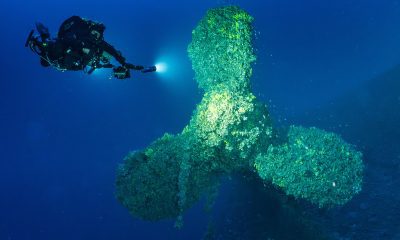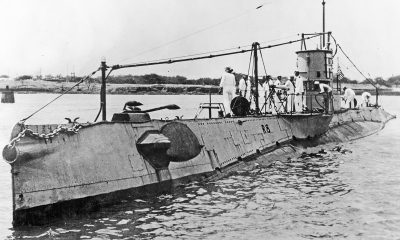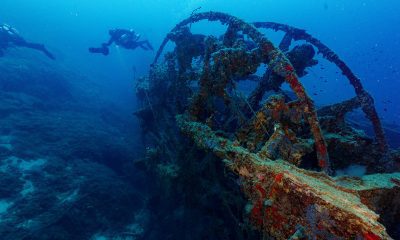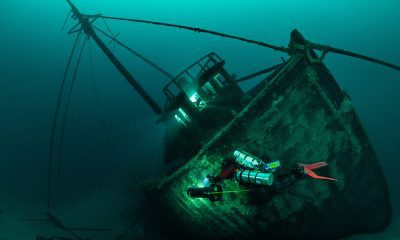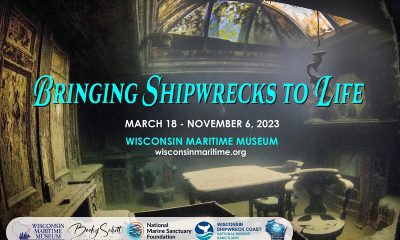Exploration
Un’elegia Baltica: le isole Åland e il relitto di “Nederland”
Il nostro poeta italiano della subacquea, affascinato dalla subacquea tecnica Andrea Murdock Alpini – o è il contrario? – tesse il racconto di un relitto Olandese affondato nelle acque del mar Baltico di ritorno dalla Russia. Murdock è andato fin lì per raccogliere gli indizi di questa storia e ricostruirla in chiave lirica, la bettolina è affondata più di cento anni fa in condizioni misteriose. Cosa deve fare un sub ‘naufrago’ se non raccontare le sue storie per immagini e parole?
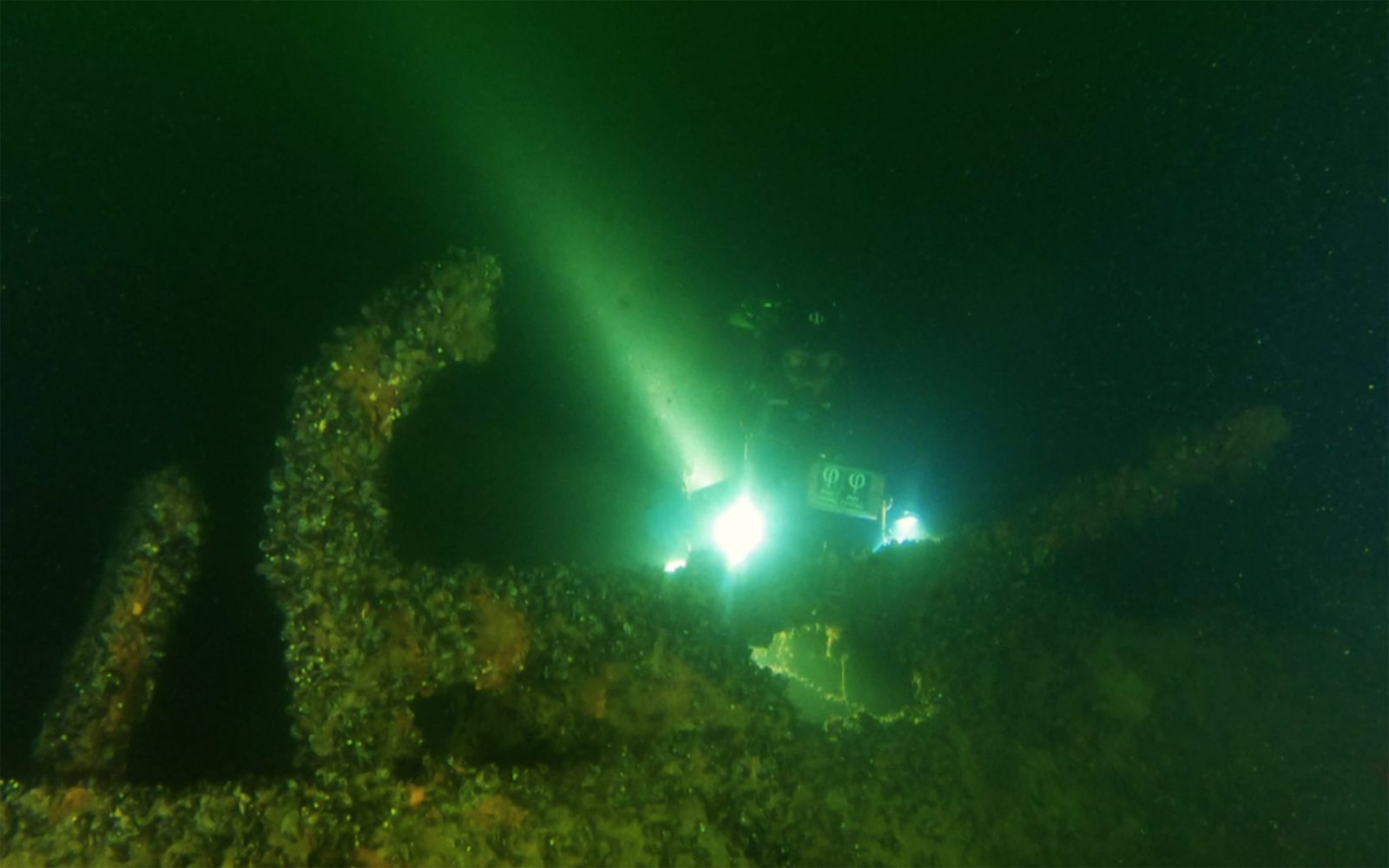
Testo, video e fotografie : Andrea Murdock Alpini .Header Image: Flavio Cavalli che illumina il lato di dritta del relitto del Nederland
Per leggere questa storia in inglese, clicca qui: A Baltic Elegy: Åland Islands and the Wreck of Nederland
Credo che siano passati una dozzina d’anni dal mio ultimo viaggio nel Mar Baltico.
Contandoli mi accordo che sono di più. In effetti sono una manciata in più: era l’estate di quattordici anni fa. Allora, da studente di architettura avevo organizzato un viaggio in Danimarca e Svezia alla ricerca di quelle composizioni scandinave che, per il rapporto che stringono con il paesaggio, sembrano essere nate dal lapis d’un antico greco.
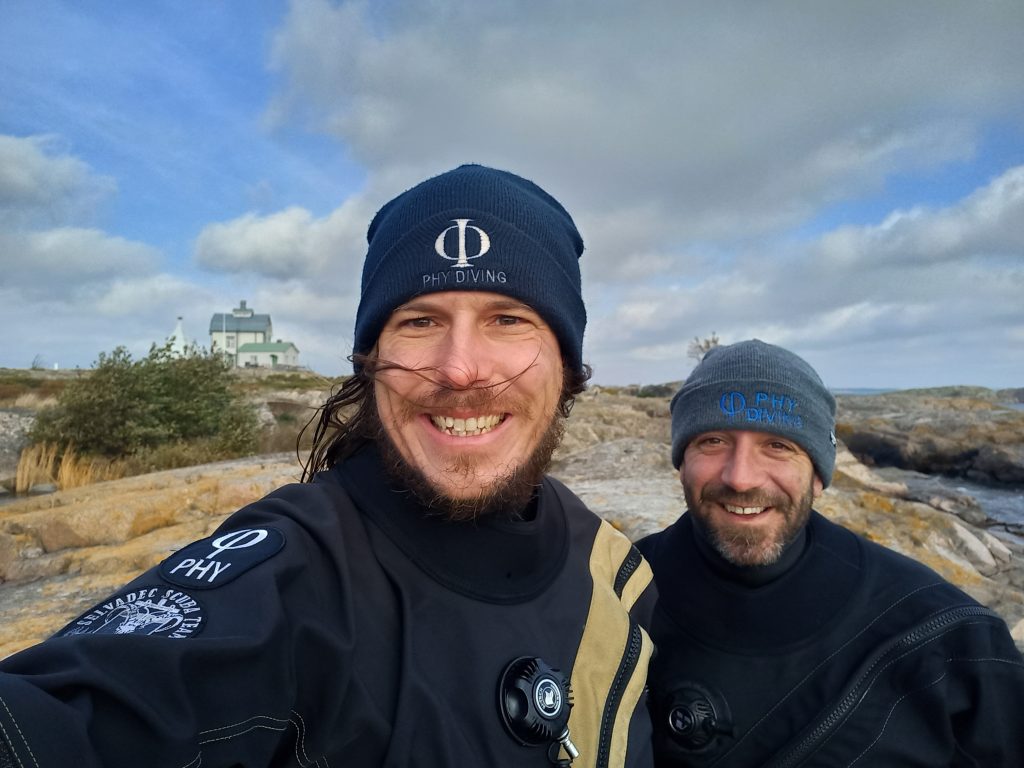
Dove il muro è paesaggio, di questo ero andato in cerca. Non mi separavo mai dal mio quaderno d’appunti, dalle dispense che preparavo per il viaggio ma soprattutto dalla mia macchina fotografica reflex con cui scattavo fotografie rigorosamente in bianco e nero a 400 ASA che, ogni tanto tiravo a 600 o anche 800. Mi piaceva vedere la grana della pellicola una volta che la foto era stampata. Non ho mai apprezzato le superficie lisce, così come le atmosfere o le persone, ho sempre preferito la ruvidità del mondo.
Qualche mese fa sono partito per Stoccolma, Svezia.
Là, di nuovo mi aspetta la nave che, questa volta mia accompagnerà fino a Mariehamn, la maggiore città delle isole Åland. Una volta approdato sulle isole finlandesi sarà compiuto il mio ritorno nel Mar Baltico. Me ne sono distaccato quasi tre lustri fa, e da allora non l’ho mai scordato.
Questa volta non mi basterà bagnare l’involucro del mio corpo, le sue spoglie, vorrei scendere là sotto, fin dove mare e vento vorranno lasciarmi andare. Lo so, l’autunno bussa alle porte e il periodo è sbagliato, fa niente. Torno da studente di relitti con una passione per la ruggine, caligine. E già so che ritornerò.
Dopotutto i relitti altro non sono che sepolcri di equipaggi, di storie di mare o di ingegneria e manifattura navale che il Mare custodisce nel tempo.

Arrivati all’imbarco della Viking, la nave che mi porterà alle isole Åland, inizia a schiarirsi il cielo. Sorge il sole e la luce stempera i colori, la temperatura resta la medesima. Una volta a bordo guadagno il decimo ponte, chiamato Sun Deck, un miraggio. Ancor più oggi. Il cielo si è fatto nero come il giorno di Pasqua e in lontananza strati di nubi riflettono il loro umore sui canali di Stoccolma.
Alle sette e quarantacinque minuti le cime scivolano sulle bitte.
La Viking ha mollato gli ormeggi: inizia la navigazione.
Due ore e mezzo dopo che abbiamo lasciato l’ormeggio arriviamo al punto in cui il Mar Baltico incontra il lago Mälaren. La vista finalmente si apre, l’orizzonte si amplia e con esso la superficie argentea di quel mare che ciascun popolo qui chiama con un nome diverso. Il Mare dell’Est per noi mediterranei porta il nome greco di Βαλτική Θάλασσα ovvero Baltiké thálassa, ma per le sue ataviche genti no, per loro si chiama Ostsee in tedesco, Östersjön in svedese oppure Østersjøen per i reali di Oslo, Itämeri nella lingua di Alvar Aalto, Østersøen per i danesi e Morze Bałtyckie per i polacchi. Per tutti questi popoli il Baltico è il Mare dell’Est, tranne per gli estoni che rappresenta il Mare Occidentale e lo chiamano Läänemeri oppure per i russi che lo appellano come Балтийское море, mentre per i lituani è Baltijos Jūra e infine per i lettoni che lo definiscono in modo non dissimile dai loro confinanti: Baltijas Jūra. Shakespeare direbbe: “Quella che noi chiamiamo rosa, anche con un altro nome avrebbe lo stesso profumo”, e in effetti è così. Questo mare poco salato, nero come la pece, poco profondo e abitato da pesci osteitti cela grandi storie di commerci e di naufragi dovuti a tempeste o difficoltà di navigazione per le migliaia di isole e isolotti affioranti che rompono le rotte. Il Mar Baltico conserva la memoria di lunghe battaglie, di sanguinose rivoluzioni di Zar, di indipendenze repubblicane ma anche storie di sommergibili russi.
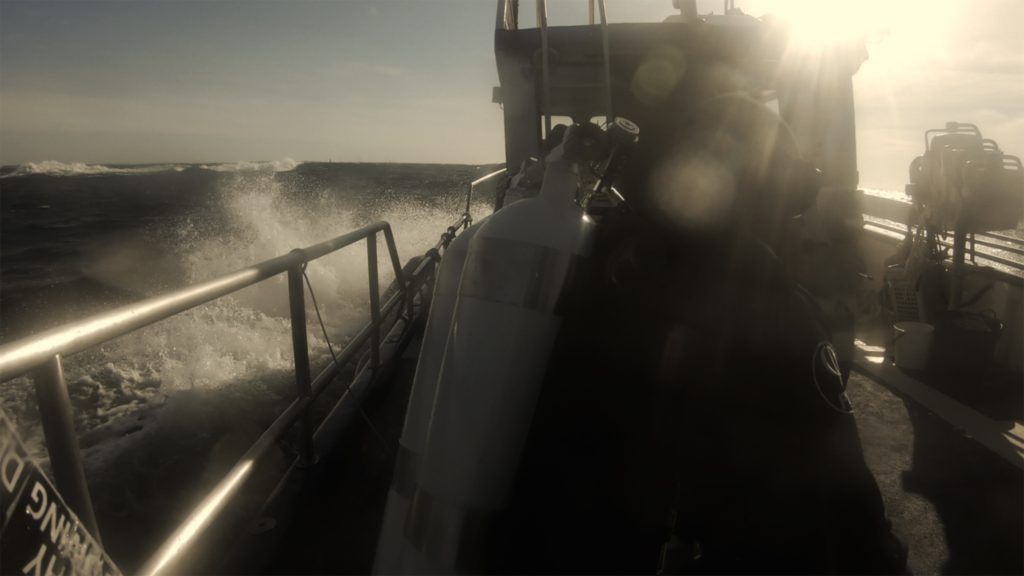
Il Baltico è un libro con ancora infinite pagine da scrivere. I suoi fondali celano relitti e conservano spoglie di marinai civili o militari, di passeggeri ma anche di culture oggi svanite e orgoglio di una nazione.
“Prima che arrivino i rivoluzionari, prima che arrivino i Bolscevichi!”
Questo deve aver pensato il comandate della bettolina fluviale olandese che salpò nel mese di dicembre 1917 da Hanko, lembo finnico nella sperduta landa russa. Il “Nederland” barge aveva mollato gli ormeggi con le stive ricolme di pietra a spacco, destinata a lastricare le strade del regno dei polder governato dalla Casa d’Orange-Nassau.
Ora a cent’anni dal naufragio, avvenuto il 18 dicembre 1917 al largo dell’isolotto di Marhällan alle isole Åland, nessuno è mai riuscito a spiegare perché una bettolina fluviale dalla chiglia piatta, priva di motore e con locomozione a vela avesse risalito il Mar Baltico per centinaia di miglia per recarsi nelle terre di ghiaccio. Quel che è certo è che l’equipaggio scampò alla Великая русская революция, ovvero la “Grande rivoluzione russa” dei Bolscevichi, ma condivise con l’imperatore di Ajaccio il fato che lo costrinse a piegarsi al Generale Inverno.
“Così dicevi”, un giorno di dicembre, mentre una roccia del Baltico apriva una falla sulla chiglia della tua bettolina costruita nel lontano 1897 a Veendam nei Paesi Bassi.
“Ed era inverno / e come gli altri verso l’inferno / te ne vai triste come chi deve / il vento ti sputa in faccia la neve.”
Lentamente affondava la bettolina, oggi senza nome, ribattezzata “Nederland” che ha trovato il suo giaciglio secolare a meno ventidue metri di profondità, tra il sedimento del mare e qualche tana per halibut o merluzzi.
La ciurma si salvò, trovando riparo sullo stesso isolotto che ne aveva determinato l’affondamento: Marhällan. Trenta ore più tardi, la nave SS Mira raccoglierà i naufraghi così che possano raccontare la storia del loro affondamento, ma non quella del motivo del loro viaggio. Nessun archivio o registro navale ha traccia di questa imbarcazione che si era recata nella terra degli Zar per caricare tonnellate di pietre.
Oggi il relitto sta affondando sotto il suo stesso peso nel fondale del Mar Baltico.
Le stive affiorano appena. Strisciando ci si può infilare al di sotto di esse, lasciando che il proprio ventre sfreghi sulle pietre squadrate da mani tagliate dal gelo e bocche impastate di alcool, quest’ultimo elisir ampiamente ingerito per combatte la fioca noia bianca dell’inverno più che sorseggiato per gusto. La prua del “Nederland” assomiglia alla sua poppa, come in tutte le bettoline fluviali. Una grande ancora è posizionata a prua, in corrispondenza della murata di dritta, poco distante in posizione centrale, sulla coperta, si trova il possente verricello e poi un osteriggio cui fa capolino una scaletta che conduce sottocoperta. Lì ho provato a infilarmi, ma il fango ricopre tutto: è una melassa vischiosa che cela tutte le storie della nave che resteranno per sempre, lì dentro, sepolte.
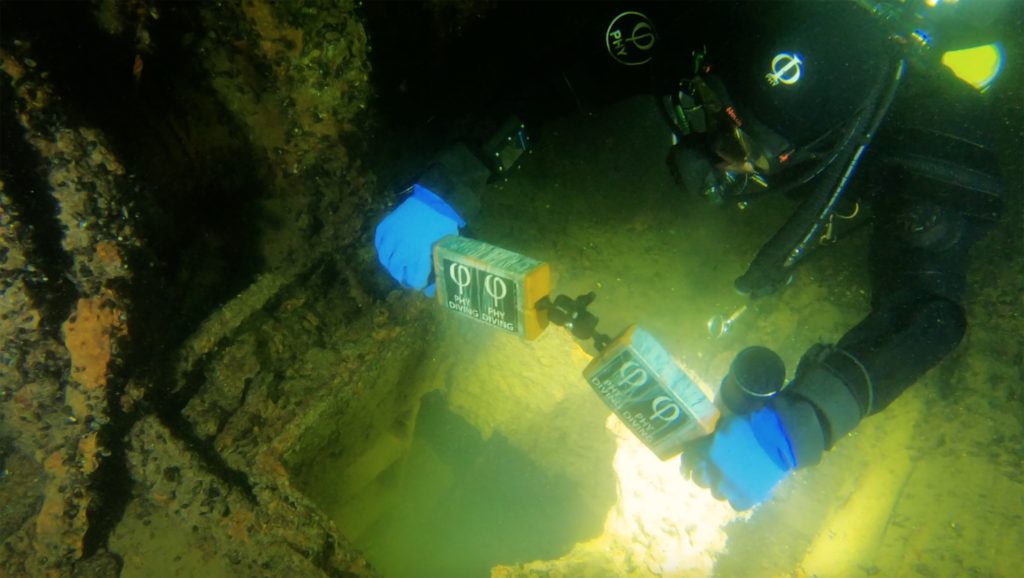
In prossimità della poppa si trova coricata sul fondale la possente pala del timone. Dove lo scafo si conclude, prende forma un ramo di ellisse in cui si trovano due targhe lignee. Quella di dritta reca l’iscrizione “Nederland” per indicare la nazione di provenienza della bettolina, mentre la placca posizionata sulla sinistra, anche rimuovendo lo strato di mitili che la ricoprono, lascia il subacqueo avventuriero senza risposta alcuna: il nome è scomparso, eroso dal tempo.
Il giorno in cui mi sono immerso su questo relitto ho cercato qualche dettaglio che potesse aiutarmi nella ricostruzione della storia di questa imbarcazione fluviale. Dopo un’ora di fondo, trascorsa a filmare e cercare informazioni della bettolina, anche io come i miei predecessori, sono riemerso tra le acque verdi, cupe e nere del Baltico con la domanda: “Come si chiamerà?”.
Un’onda di un metro e mezzo mi ha tolto la vista sul faro, poi la corrente mi ha spinto lontano dallo scoglio semi affiorante che da i natali a onde voluttuose di schiuma bianca.
Botticelli avrebbe dipinto una Venere diversa se fosse stato quassù. Ne sono certo.
Il Baltico è catartico: “You want it darker / We kill the flame”.

È giusto così, me ne vado anche questa volta con la necessità di tornare.
Non ho finito il lavoro su questo relitto, devo tornare, a questo punto non è più una mia scelta ma una necessità. Tornerò e racconterò le storie di altre navi e altrettanti equipaggi. Dei loro viaggi e delle speranze finite sul fondo del Mar Baltico. La separazione è sempre un momento delicato, devi andartene o vuoi andartene ma allo stesso tempo, quando metabolizzi la decisione allora torna in te un velo di malinconia per quel che è stato. “Now so long, Mariehamn, it’s time that we began”, nelle assonanze canadesi ritrovo le parole adatte per descrivere la mia dipartita dalle isole finlandesi ma di lingua svedese.
Domani sarà l’ora dell’imbarco tra le onde dell’arrivederci: “Here comes the morning boat / Here comes the evening flight / There goes Mariehamn now / To wave goodbye again”.

Andrea Murdock Alpini è istruttore tecnico TDI e CMAS di trimix ipossico, immersioni avanzate su relitti e in grotta o miniere. È affascinato dai relitti profondi, compie ricerche storiche, studi sulla decompressione al fine di realizzare filmati subacquei e scrivere report delle sue immersioni.Ha ottenuto la laurea magistrale in Architettura e un Master MBA in Economia dell’Arte. Andrea Murdock Alpini è inoltre fondatore del marchio PHY Diving Equipment. La sua vita ruota attorno all’insegnamento delle tecniche di immersione in circuito aperto, organizzare spedizioni subacquee, sviluppare attrezzatura per subacquea tecnica, organizzare conferenze e scrivere articoli e libri circa la sua filosofia di immersione su relitti e in ambienti ostruiti come miniere e grotte. Magenes Editoriale ha pubblicato il suo libro Deep Blue: storie di relitti e luoghi insoliti.



















